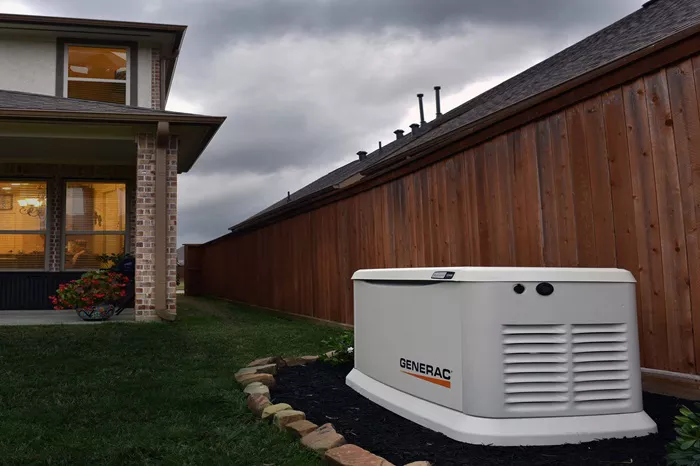Choosing the right generator for your home is an important decision, especially if you live in an area prone to power outages. A good generator ensures that your essential appliances keep running, providing comfort and safety during emergencies. But with so many types and models available, how do you know which one is best for your needs?
In this guide, we’ll break down everything you need to know—from different generator types to key features, fuel options, and installation tips. By the end, you’ll have a clear idea of which generator is right for your home.
Types of Home Generators
Before buying a generator, you need to understand the different types available. Each has its own advantages and best-use scenarios.
Portable Generators
Portable generators are the most common choice for homeowners. They are affordable, easy to move, and can power essential appliances during an outage.
Pros:
- Lower upfront cost
- Can be moved and stored easily
- Good for short-term power needs
Cons:
- Require manual setup
- Must be operated outdoors to avoid carbon monoxide poisoning
- Limited power output (usually 3,000 to 8,500 watts)
- Best for: Occasional power outages, camping, or job sites.
Inverter Generators
Inverter generators are a more advanced type of portable generator. They produce clean, stable power, making them safe for sensitive electronics like laptops and smartphones.
Pros:
- Quiet operation
- Fuel-efficient
- Safe for electronics
Cons:
- More expensive than conventional portable generators
- Lower power output (typically 1,000 to 4,500 watts)
- Best for: RV trips, outdoor events, and homes with sensitive electronics.
Standby Generators
Standby generators are permanently installed outside your home and automatically turn on when the power goes out. They are connected directly to your home’s electrical system.
Pros:
- Automatic operation
- High power output (7,500 to 20,000 watts or more)
- Can power an entire home
Cons:
- Expensive installation and maintenance
- Requires professional setup
- Best for: Homes in areas with frequent or long power outages.
Solar Generators
Solar generators use solar panels to charge batteries, which then provide power. They are eco-friendly and silent but depend on sunlight availability.
Pros:
- No fuel costs
- Quiet and emission-free
- Low maintenance
Cons:
- Limited power output
- Slow recharge time in cloudy weather
Best for: Eco-conscious homeowners or as a backup for small appliances.
How to Choose the Right Generator Size
One of the most important factors in choosing a generator is its power output, measured in watts. If your generator is too small, it won’t run all your appliances. If it’s too big, you’ll waste fuel and money.
Calculate Your Power Needs
Make a list of essential appliances you want to power during an outage. Check their wattage (usually found on labels or manuals).
Example:
Refrigerator: 600-800 watts
Lights: 60-100 watts each
Sump pump: 800-1,500 watts
Window AC unit: 1,000-1,500 watts
Add up the wattage of all devices you plan to run at the same time. This gives you the minimum wattage your generator should provide.
Consider Starting vs. Running Watts
Some appliances (like refrigerators and air conditioners) need extra power when starting up. This is called “starting watts” or “surge watts.” Your generator must handle both running and starting wattage.
Example:
- A refrigerator may need 800 watts to run but 1,200 watts to start.
- Choose a Generator with 20% Extra Capacity
- To avoid overloading your generator, pick one with at least 20% more power than your calculated needs.
Fuel Options for Generators
Generators run on different fuels, each with pros and cons.
Gasoline
Pros: Readily available, affordable.
Cons: Short shelf life (stabilizers help), flammable.
Diesel
Pros: More efficient, longer lifespan.
Cons: Noisier, fuel can gel in cold weather.
Propane
Pros: Long shelf life, burns cleanly.
Cons: Lower energy output, requires storage tanks.
Natural Gas
Pros: Unlimited supply if connected to a gas line.
Cons: Requires professional installation.
Important Features to Consider
When shopping for a generator, look for these key features:
Automatic Start (For Standby Generators)
Ensures the generator turns on immediately during a power outage.
Electric Start vs. Pull Start
Electric start: Easier, especially in cold weather.
Pull start: More manual effort but no battery needed.
Low Oil Shutoff
Prevents engine damage by shutting down the generator if oil levels are too low.
Multiple Outlets
Allows you to power several devices at once.
Noise Level
If noise is a concern, look for models labeled “quiet” (usually under 60 decibels).
Installation and Safety Tips
Proper Ventilation
Never run a generator indoors or in an enclosed space due to carbon monoxide risks.
Use a Transfer Switch (For Standby Generators)
Prevents backfeeding, which can be dangerous for utility workers.
Regular Maintenance
- Change oil every 50-100 hours of use.
- Keep fuel fresh (use stabilizers if storing for long periods).
- Test the generator monthly.
Conclusion
Choosing the right generator depends on your power needs, budget, and how often you experience outages. Portable generators are great for occasional use, while standby generators offer seamless backup power for entire homes. Always calculate your wattage needs, consider fuel options, and prioritize safety. By following this guide, you’ll be well-equipped to make an informed decision and keep your home powered during emergencies. Would you like recommendations for specific brands or models? Let us know in the comments!

